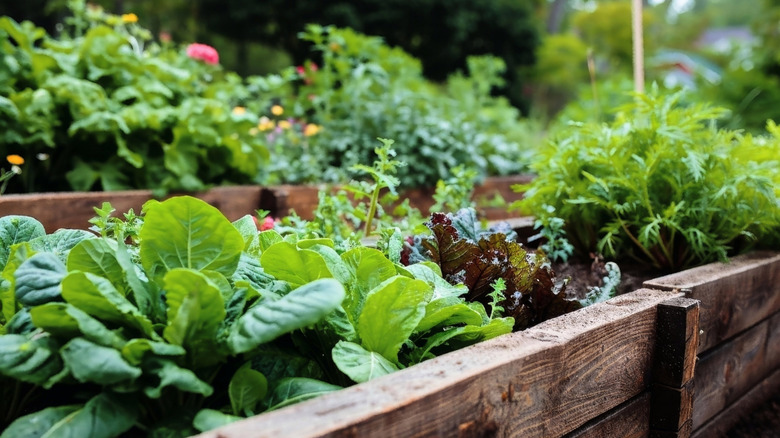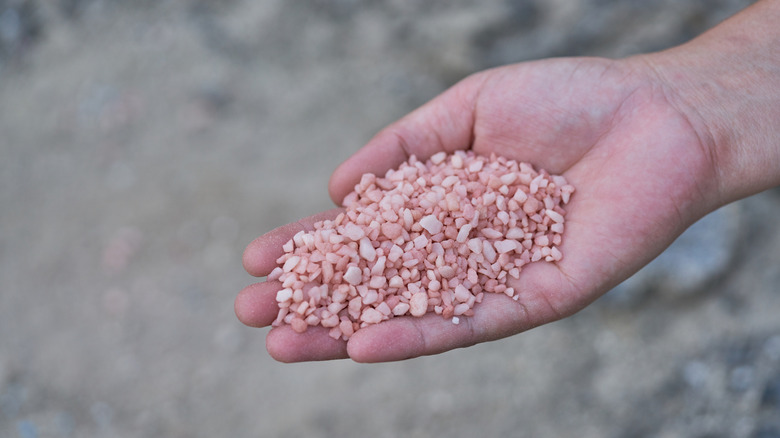How To Boost Potassium Levels In Your Garden Without Adding Wood Ash To The Soil
We may receive a commission on purchases made from links.
The difference between a garden that's surviving and one that's thriving often comes down to soil testing. Measuring your growing site's nutrient levels shows if there are deficiencies that need correcting. It also indicates whether a small adjustment, a big boost, or something in between is required. Many commercially available soil tests will tell you if your garden's soil lacks nitrogen and some other elements that make plant life possible. For example, the SaySummer 4-in-1 testing kit assesses your soil's nitrogen, phosphorous, and potassium levels. If you find that your garden's potassium reading is suboptimal, there are a few ways to raise it. Incorporating wood ash from your fireplace into your garden can restore its potassium level, but this wood-burning byproduct shouldn't be used near plants that need acidic soil, tubers susceptible to potato scab, or fragile seedlings. Whether you need to avoid wood ash or don't have access to it, start your potassium quest with organic materials.
According to Josh Gardens, the master gardener in charge of the Instagram account @theplanttechie, compost and composted manure are two of the most popular organic materials for boosting soil's potassium levels. "While their potassium content is not as concentrated as wood ash, they offer a balanced, slow-release approach that benefits overall soil health," he says, adding that these amendments provide "other essential nutrients and improve soil structure." Making compost at home doesn't cost much and keeps vitamin-packed kitchen waste — fruit peels and vegetable skins, for example — out of landfills. You can also make nutrient-rich "tea" for your garden by soaking compost or plants in a 5-gallon bucket of water for a week or so.
Natural and synthetic potassium boosters to consider for your garden
If you opt to make DIY fertilizer tea, consider using potassium-rich plants as the base. A few plants that fit this profile are comfrey, chicory, and dandelions. Some people use banana peels in the garden since they contain a lot of this nutrient. One way to do this involves filling a pitcher of water with banana peels, letting it sit for a week, and straining out the liquid. The liquid is then diluted — 5 parts of water for every 1 part of banana peel liquid — and fed to plants growing in low-potassium soil. If fertilizer tea isn't your cup of tea, kelp meal might be. You can search for a balanced fertilizer that contains this algae extract or use a product like Plantonix Kelp Bliss as a standalone soil amendment. "While its potassium content is moderate, it also provides a wide range of trace minerals that can enhance plant growth and resilience," Josh Gardens says.
Synthetic fertilizer can also get the job done. "Mineral rock powders, potash, and potassium sulfate are all reliable sources of potassium that can be applied to the soil in moderate amounts. These options work well for crops with higher potassium demands or when a quick fix is needed to address nutrient deficiencies," Josh says. By returning potassium to your garden's soil, you'll ensure that your plants have what they need to perform photosynthesis, move water through their tissues, and take in other nutrients such as nitrogen and phosphorous. In other words, adequate potassium levels help your garden grow and support its overall well-being.

